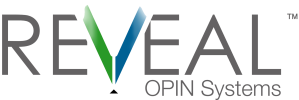I have a golfing buddy named Bob who loves to operate with the “if it ain’t broke – don’t fix it” philosophy. In fact he follows that adage so tenaciously he even held on to his trusty old clamshell phone despite the blizzard of advertising for smart phones and the well-meaning advice of friends and family.
 Whenever asked he’d quickly respond with his favorite mantra and then add: “Hey, the clamshell still lets me make and receive calls and that’s what I bought it for.”
Whenever asked he’d quickly respond with his favorite mantra and then add: “Hey, the clamshell still lets me make and receive calls and that’s what I bought it for.”
Last fall we scheduled a round for our foursome at one of our favorite but somewhat pricey clubs. Last minute I found an amazing 50% off coupon and shot off a quick text and email to my friends. It saved us all enough for beverages and appetizers at the 19th hole. Well, all of us except Bob that is. You got it, he was out of the office and the clamshell didn’t deliver the message.
Shortly thereafter when Bob upgraded to a smart phone he quickly discovered that text and email were just the beginning of what he was missing. He could hardly believe the benefits he got from apps that let him organize his life, become more productive, and yes, even find last minute golf coupons.
As I reflected on this incident the other day I was struck by how easy it was to see the mistake Bob was making and yet, how easy it is for IT to fall into the same trap when it comes to legacy software. Such applications do exactly what they were acquired to do but leave the organization missing out on some very important things.
Replacing Legacy Report Management Software
Take Enterprise Report Management (ERM) software for example. As one of the earliest entries into the content management space this software is in the mature stage of the technology adoption cycle. Legacy ERMs still capture, secure and manage production document output as they did the day they were installed. As a result many organizations see “ if ain’t broke don’t fix it” as the appropriate strategy.
Yet t his strategy may be costing the organization big time. Let me cite just a few obvious examples:
his strategy may be costing the organization big time. Let me cite just a few obvious examples:
- Scalability– Prior generation ERMs were built on client server or even earlier software platforms. You might be able to temporarily scale vertically by adding more resources but that can be just a costly short-term fix as you ultimately hit a wall to further expansion. What is the cost of this lack of flexibility as your organization grows with success?
Today’s ERM web-based software platforms allow you to scale quickly and effectively horizontally. This is essential in a world where change is constant and agility an essential competitive attribute.
- Integration – Prior generation enterprise applications were built to operate as silo solutions. One didn’t expect applications to actually interoperate with one another when these technologies were commonly used.
Connectedness and flexibility are paramount in today’s IT ecosystem. Storing reports in an ERM that are not easily accessible from your ECM or core business applications can create bottlenecks in business processes and cost time and money for the organization.
Also having a legacy ERM not flexible enough to seamlessly integrate with and deliver content to a unified user interface impacts customer experience. What might the competitive cost of that be?
Having a current generation solution that is CMIS compliant opens windows of opportunity for all kinds of connectedness.
- Security – Let’s make this simple – would you protect your personal computer with the award winning antivirus solution of 2010? Of course not. Similarly your Chief Security Officer might not sleep well knowing some of the company’s most important data relies on a legacy solution built during the pre-smart phone era for compliance and privacy protection. Nobody wants to be the next front-page story about a data breech.
Today’s ERM solutions are built to operate in today’s business environment and support current compliance and privacy.
- Productivity – Early ERM products were about delivering a report or document to your desktop in digital form. A current generation solution does much more to empower users to get work done.
For example solutions like Reveal from OPIN Systems allow users to store reporting profiles that enable them to automatically extract data from reports and present it in multiple views that empower them to get work done more quickly and easily.
Imagine the productivity cost of hundreds of users manually extracting data to put it into an excel spreadsheet month after month. And aside from the hours wasted – exactly what is the cost related to the impact on your speed of execution?
As William E. Simon, former Secretary of the Treasury once wisely stated: “Productivity and the growth of productivity must be the first economic consideration at all times, not the last. That is the source of technological innovation, jobs, and wealth.”
- Stewardship – What I mean by this is that good managers aspire to manage corporate resources entrusted to them just as effectively as they would their own money. As individuals most of us upgraded to smart phones because we knew it was smart and there was value in it for us. We saw the opportunity to do things we could never do on the old clamshell.
As a good manager and steward of company resources, why would we do anything less? Perhaps it’s time to take a hard look at applications that still run but really need replacing with a latest generation system that delivers meaningful new value and ROI.
So, when it comes to legacy software…keep it or replace it?
If you’re wondering, perhaps you should ask my friend Bob…
